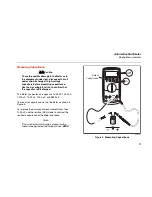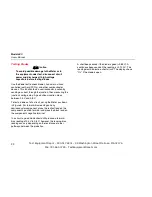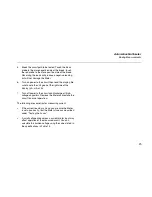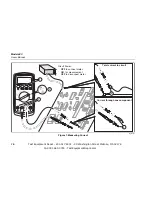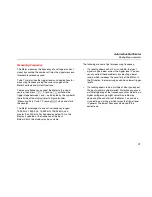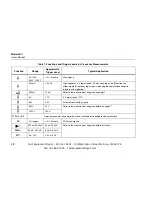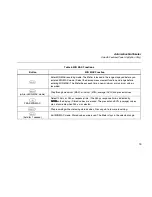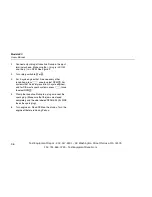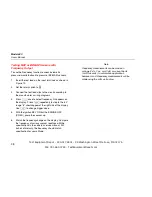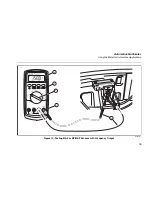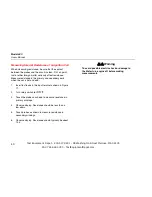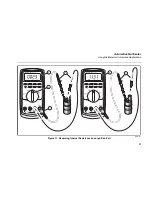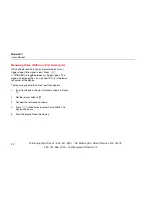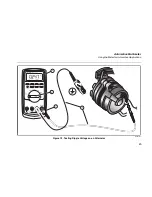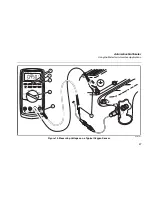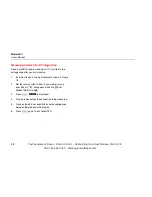
Automotive Multimeter
Using the Meter for Automotive Applications
Measuring RPM
RPM can be measured in either the dc volts or ac volts
function. In dc volts, the measurement is dc-coupled, while
in the ac volts position, it is ac coupled. If RPM readings
appear noisy, you should use the function setting that
provides the most stable reading.
Two RPM functions are available:
•
RPM
o
is used for conventional 4-cycle engines.
•
RPM
n
is used for 2-cycle engines or waste spark
DIS 4-cycle engines (1 count/revolution).
When RPM is first selected, the Meter is in the 6 V dc
range. (The range is indicated by the number shown at the
right end of the analog bar graph.) If the reading is
unstable, move to the 60 V range by pressing
C
once.
The Meter comes with an inductive pickup. The inductive
pickup takes the magnetic field generated by the current in
the spark plug wire and converts it to a pulse that triggers
the Meter's RPM measurement. The Meter can also read
RPM directly from appropriate signals (like the camshaft
position sensor or tach signals) using test leads rather than
the inductive pickup.
•
If the meter reading is too high or is unstable, move to
the next V range by pressing
C
once.
•
On some systems with non-resistor plugs, the pickup
may need to be moved away from plug or use the AC
function.
•
On DIS waste spark systems, the pickup may need to
be reversed, depending on what side of the coil the
plug is on.
Note
When RPM measurements are displayed, the last
digit on the display might not settle. If you want a
more stable display, use the Smooth function. In
Smooth mode, multiple measurements are
averaged before a value is displayed. Refer to the
Smooth Feature earlier in this manual.
XW
Warning
To avoid personal injury, make sure that the
engine is off before connecting or removing
the pickup. The ignition system can create a
potential shock hazard.
1.
Turn engine off.
35

